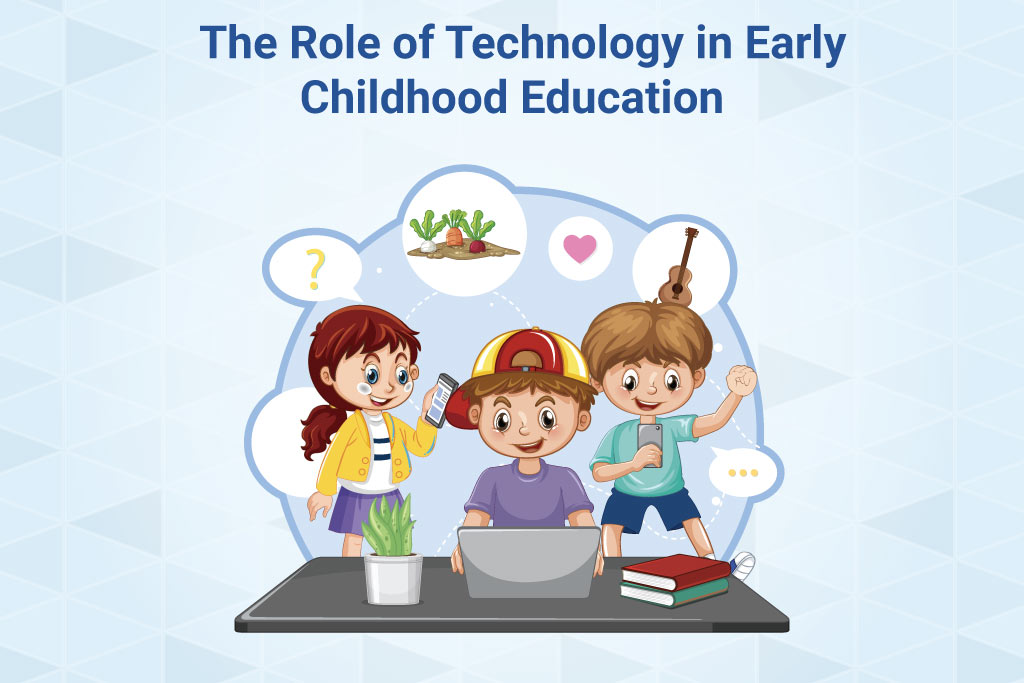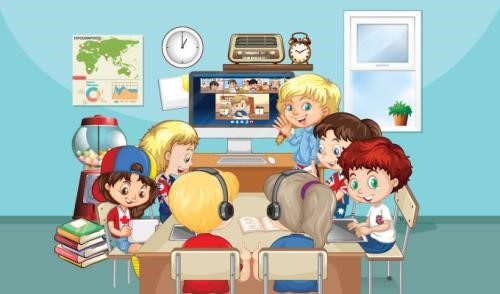Importance of Technology in Early Childhood Education
Technology has now entered almost all aspects of our lives, from the professional world to education. It has also revolutionised early childhood education in recent years, providing teachers with new ideas to use in the teaching process for little ones. Interactive apps, devices, and multimedia content have enabled children to receive meaningful learning in ways different from conventional lessons.
Digital technology in early childhood education makes learning enjoyable and easy to adopt by children as they start learning basic skills by interacting with the tools around them.
But, this needs to be accompanied by hands-on activities to make sure that the child is well-developed and there is less screen time. Technology, if incorporated wisely, can make students more creative and innovative along with teaching teamwork and enhanced problem-solving. It will also enhance their general development.
Wondering How Tech Enhances Early Learning?
A] What Is Technology in Early Childhood Education?
Technology in early childhood education is defined as the use of devices like tablets, mobiles, and laptops to support learning and teaching. These tools are intended to help the students, particularly the young ones, learn through the use of multimedia content. For example, the child might read numbers, solve jigsaw puzzles or learn new words through apps that contain games and animation.
With the help of interactive whiteboards, educators design attractive lessons for children that include video, picture, and drawing options. The application of these technologies augments formative teaching-learning processes to come up with an innovative learning environment for everyone.
B] Benefits of Technology in Early Learning
Technology provides numerous advantages when applied properly in early childhood education. Not only do these tools develop a better way of engaging the children, but also offer ways in which kids could be trained or taught based on their skills or interests.Phonic courses empower young learners to build foundational language skills, complementing technology-driven learning techniques.
Let’s explore some of the key advantages of incorporating technology into early learning:
1. Interactive Learning
Modern tools include applications and online games that transform the learning process into an engaging experience. For example, a mathematics application could utilise animation and sound to teach counting or a language application could use storytelling to teach reading. Such involvement assists in achieving and sustaining the children’s attention and motivation so that learning becomes fun as well as productive.
2. Personalised Education
Another improvement that comes with technology is that it enables students to receive appropriate learning solutions. Since education applications and programs for children can be designed flexibly, they can pose specific levels of difficulty and provide feedback according to each child. For example, a reading application may display relatively easy texts for first-graders and may show complex works to higher-grade learners. This tends to make sure that every single child gets the support they need to grow.
3. Skill Development
Using technology helps children develop a variety of skills that are essential for success in the modern world. For instance, engaging with touchscreens and styluses can improve fine motor skills, while solving puzzles and navigating apps builds problem-solving abilities. Additionally, exposure to digital tools fosters digital literacy—a critical skill for navigating the 21st-century landscape.
4. Global Access
Technology provides young learners with access to a wealth of information and experiences from around the globe. Through multimedia content, children can explore different cultures, languages, and environments. For example, a virtual field trip app might take children on a tour of the Amazon rainforest or a museum in Paris, broadening their horizons and encouraging curiosity about the world around them.
In summary, technology enhances early childhood education by making learning engaging, adaptable, and globally connected. These benefits lay the foundation for academic success while nurturing creativity and exploration.
C] Challenges of Technology in Early Education
While technology offers many benefits, it also presents challenges that educators and parents must address to ensure its effective use. Awareness of these potential issues can help mitigate their impact and create a balanced approach to integrating technology in early education.
1. Screen Time Concerns
Excessive screen time can have negative effects on children’s physical and mental health. Prolonged use of digital devices may lead to issues such as eye strain, reduced physical activity, and difficulty focusing. Additionally, spending too much time on screens can limit opportunities for social interactions and hands-on exploration, which are essential for developing creativity and problem-solving skills.
2. Access Inequality
Not all children have equal access to technology, which can create disparities in learning opportunities. Families in low-income communities may lack the resources to provide devices or reliable internet connections, putting their children at a disadvantage. This digital divide highlights the need for schools and policymakers to ensure equitable access to technology for all students.
3. Dependency Risks
Over-reliance on technology in education can hinder children’s ability to engage in non-digital learning experiences. For instance, excessive use of apps for problem-solving may reduce children’s willingness to experiment and explore solutions through hands-on activities. It is crucial to strike a balance between digital tools and traditional learning methods to nurture creativity and critical thinking.
By recognising these challenges, educators and parents can make informed decisions about how to use technology in ways that support children’s overall development.
D] Best Practices for Using Technology
To maximise the benefits of technology in early childhood education while addressing its challenges, it is important to adopt best practices. These guidelines can help educators and parents use digital tools thoughtfully and effectively:
1. Balanced Approach
Technology should be one part of a well-rounded learning experience that includes traditional play, outdoor activities, and hands-on exploration. For example, an art app might complement—but not replace—time spent painting or drawing with physical materials. Striking this balance ensures that children develop a wide range of skills and experiences.
2. Age-Appropriate Content
Not all apps and tools are suitable for young children. It is essential to choose digital content that is specifically designed for early learners, with features such as simple navigation, engaging visuals, and educational value. Parents and educators should also evaluate the quality and safety of apps, avoiding those with excessive ads or inappropriate material.
3. Parental and Educator Guidance
Children benefit most from technology when adults are actively involved in their learning. Parents and teachers should monitor screen time, provide context for digital content, and guide children’s interactions with technology. For example, a parent might watch an educational video with their child and discuss the key concepts afterwards to reinforce learning.
4. Interactive Engagement
Rather than using technology as a passive activity, it should encourage interaction and collaboration. Co-viewing videos, playing educational games together, and discussing digital content can make the experience more meaningful and enriching. These interactions also help build communication and social skills.
By following these best practices, educators and parents can ensure that technology enhances learning without overshadowing other essential aspects of childhood development.
Wondering How Tech Enhances Early Learning?
Conclusion
Technology in preschool has the potential to enrich early childhood education by making learning more engaging, accessible, and personalised. Digital tools such as apps, tablets, and interactive whiteboards create opportunities for children to explore, create, and connect with the world around them. However, to maximise the benefits of technology, it is crucial to address challenges such as screen time, access inequality, and dependency risks.
Parents and educators can create a harmonious blend of digital and traditional learning experiences by adopting a balanced approach, using age-appropriate content, and providing guidance. When used thoughtfully, technology can inspire curiosity, foster creativity, and prepare young learners for a bright future in the digital age.
For more information about our phonics courses or to discuss your child’s educational needs, contact us

Hema Dave
Stemming from the aspiration to nurture and inspire young minds, Hema started her professional journey into education 20+ years ago. She founded 'Phonic Smart' as a trained educationist, an institute committed to equipping children with phonics skills and helping parents and teachers implement them effectively. Her diverse skill sets, encompassing teaching, teacher training, and coaching allow her to contribute valuable insights to the education industry.



